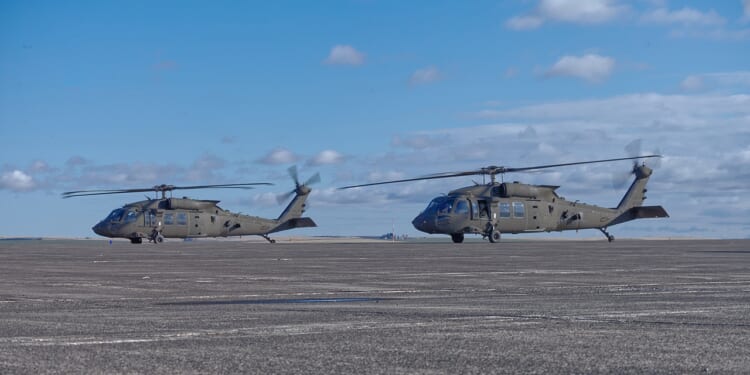Though unknown to the Clinton administration at the time, at least 10 members of Al-Qaeda were apparently aiding Somali fighters at the “Battle of Mogadishu” in October 1993.
In 1993, the United States was at the height of its global power and influence. After winning a bloodless victory against the Soviet Union in the decades-long Cold War, and crushing Saddam Hussein’s Iraq—annihilating the fourth-largest army in the world in a handful of days—during Desert Storm, the United States military believed there was nothing that could stop it.
Twenty years before anyone in Washington would again start using tiresome phrases like “near-peer competitors” and “multipolarity,” the United States was the colossus bestriding the world. The “Washington Consensus,” as it was arrogantly dubbed at the time, would reign supreme—and the rest of the world would adapt to that reality or die.
In October 1993, that veneer of supremacy came crashing down in a humiliating way for the Americans. For a brief moment, the United States military was seen as weak. And it was viewed this way not because it was defeated by a rival—but by a rag-tag group of Islamist fighters in the dusty, distant Middle East, portending America’s next great struggle.
What Was the US Military Doing in Somalia, Anyway?
Having been stationed at the end of the first Bush administration, the US military (starting with the US Marine Corps) was deployed as part of a multinational peacekeeping force to the Mogadishu airport to hand out pallets of food and other humanitarian aid to the starving Somalis. In 1991, following the fall of longtime Somali dictator Siad Barre, a multi-sided civil war erupted in that country, with neutral institutions of state dissolving and Somalis falling into factions along tribal lines. The most powerful of all the tribal clans, led by Mohamed Farrah Aidid, had weaponized famine against their perceived enemies in its civil war.
Disgusted by the images from Somalia that showed children and women starving because Aidid’s militia had cut them off from access to food and water, Bush deployed the Marines to ensure aid was rendered to the civilians of Somalia. That phase of the mission worked. When Bush lost the 1992 presidential election to Arkansas Democrat Bill Clinton, his successor decided to maintain the mission in Somalia. Within months, Clinton, who favored a far more aggressive foreign policy centered on human rights protections rather than cold calculations of national interest, expanded the mission, sending US Army Rangers to Mogadishu and having them target Somali warlords whom they believed were responsible for the human rights violations.
In so doing, Clinton was effectively picking sides in the Somali civil war, becoming a party to the conflict—and transforming the Americans from humanitarian peacekeepers into targets in the eyes of some Somali factions. Of course, riding high from the recent victory in Kuwait, the Americans did not think they could be seriously challenged by the khat-swilling, Kalashnikov-wielding peasants and goat herders of Somalia.
So, when the Army Rangers and their DELTA Force partners were ordered to disrupt a high-level meeting of the leadership of Aidid’s militia in downtown Mogadishu, the Clinton administration ordered the Army to conduct that raid in broad daylight. The White House even declined to provide armor support to the advancing Americans on the grounds that such support was unnecessary, even though the Pentagon had warned about the dangers of the mission. In reality, the Clinton administration did not fully understand the nature of the enemy; but it also did not want to be seen as “escalating” in Somalia, a place that it had billed as an ancillary security concern.
The Battle of Mogadishu Was the First Battle of the War on Terror
That mission, on October 3, would become historic for all the wrong reasons. Everything that could have gone wrong did go wrong. It resulted in the loss of 18 servicemen, with an additional 80 (out of a total of 115 deployed to fight) wounded; the shooting down of two Black Hawk helicopters, the parading of the bodies of US DELTA Force operators—Randy Shughart and Gary Gordon—through the streets of Mogadishu, a prolonged hostage crisis involving one of the surviving pilots of the downed Black Hawk, Chief Warrant Officer Mike Durant, and the abject humiliation of the vaunted US military.
By the time that Battle of Mogadishu ended, the Americans abandoned their position in Somalia and never returned. Indeed, the US military had killed scores more Somalis compared to the number of Americans who had been killed in the fight against the Somalis in Mogadishu. Some Pentagon officers even advised the president to effectively escalate and demolish Mogadishu so as not to appear weak on the world stage. Pragmatically, Clinton instead headed for the exit—cutting America’s losses but ending its mission in Somalia in disgrace.
This humiliation was not merely a one-off. It had profound implications for US foreign policy. Within a year of the Black Hawk Down incident, genocidal Hutu militias in nearby Rwanda began to systematically murder all members of the rival Tutsi tribe. Chastened by the still-recent example of the events in Mogadishu, Clinton declined to intervene; in the ensuing weeks, one million Tutsis and anti-genocide Hutus were killed before the government fell. Once again, US foreign policy shifted back toward interventionism—paving the way for Clinton’s involvement in the former Yugoslavia, and the second Bush administration’s ill-fated wars in Afghanistan and Iraq.
But by deciding to expand upon the elder Bush’s humanitarian policy in Somalia in 1992, eventuating in the loss at Mogadishu, Clinton affirmed the claims of Islamists at the time—notably Osama bin Laden—that the Americans were a paper tiger.
The “Somalia Syndrome”
Years later, it would be confirmed that no fewer than 10 Al-Qaeda leaders and figures “were present during the infamous ‘Black Hawk Down’ battle in Mogadishu in 1993,” per Caleb Weiss of the Foundation for Defense of Democracies (FDD). This is merely the most recent claim by many experts, including some now-retired CIA officials, who insist that Bin Laden’s loyalists were on the ground in Somalia throughout America’s deployment there, helping train Aidid’s Islamist militia on how to fight the Americans.
Indeed, the methodology of downing the Black Hawks—using Soviet-made Rocket Propelled Grenades (RPGs) to hit the tail rotors of the low-flying helicopters as they provided air cover for the advancing ground forces—were tactics Bin Laden and his Al-Qaeda fighters learned while fighting against the Soviet Army in Afghanistan throughout the 1980s—ironically with some measure of alignment with, if not outright support from, America’s Central Intelligence Agency (CIA).
Bin Laden himself said he had hoped to humiliate the Americans publicly in Mogadishu to create what he called a “Somalia Syndrome,” a play on the “Vietnam Syndrome” that US policymakers used to refer to the lack of confidence in US power following America’s defeat in the Vietnam War. Because of America’s defeat in Vietnam to a supposedly inferior adversary, it made America risk-averse in the decade that followed. Bin Laden believed that, despite its overwhelming technological supremacy, the American military was weak and could easily be cowed into submission by making that military bleed publicly, even for a short while.
After the lighting victory over Saddam Hussein in Desert Storm, Bush claimed he had put the last vestiges of America’s “Vietnam Syndrome” to rest. Bin Laden hoped to resuscitate it by humiliating the US at Mogadishu. It worked. Many new recruits flocked to Bin Laden’s cause, at least in part because he appeared to have struck a vital blow against America.
Somalia Was a Portent of Things to Come
More than that, though, was the way in which that seemingly-insignificant Battle of Mogadishu shaped US foreign policy a decade later. That conflict in Somalia was a snapshot of the awful future awaiting US forces that would eventually be engaged to fight the Global War on Terror following Al-Qaeda’s successful attacks on the homeland on 9/11. And the mistakes the US made going into the Battle of Mogadishu were the same mistakes that the United States made, only on a grander scale, in the Global War on Terror.
So October 3 is a somber day to remember. It was actually the first day of the end of America’s self-proclaimed unipolar world order. That was the day in which the great adversaries of America in the post-Cold War era had their first victory of many against Uncle Sam.
About the Author: Brandon J. Weichert
Brandon J. Weichert is a senior national security editor at The National Interest. Recently, Weichert became the host of The National Security Hour on America Outloud News and iHeartRadio, where he discusses national security policy every Wednesday at 8pm Eastern. He is also a contributor at Popular Mechanics and has consulted regularly with various government institutions and private organizations on geopolitical issues. Weichert’s writings have appeared in multiple publications, including The Washington Times, National Review, The American Spectator, MSN, The Asia Times, and others. His books include Winning Space: How America Remains a Superpower, Biohacked: China’s Race to Control Life, and The Shadow War: Iran’s Quest for Supremacy. His newest book, A Disaster of Our Own Making: How the West Lost Ukraine is available for purchase wherever books are sold. He can be followed via Twitter @WeTheBrandon.
Image: Shutterstock / Steve Lawn Jr.

















